Lake design is a big part of a golf course. Most golf projects include a significant amount of water features for reasons ranging from the need to generate dirt to providing enhanced aesthetic value. The key when designing a course is to attempt to balance these interests in a way that provides the maximum benefit throughout the life of the project.
Aesthetics and Playability
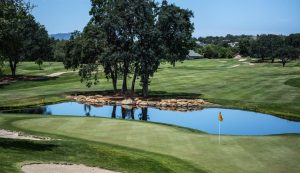 In the earliest stages of a project, go through all the possibilities for pond locations. When selecting the position for ponds, look for low-lying or flatter portions of the property. Doing so will maximize the benefit of gravity-flow to drainage systems and minimize the expense of excavation. Choosing a lower spot will give the pond a more natural aesthetic benefit.
In the earliest stages of a project, go through all the possibilities for pond locations. When selecting the position for ponds, look for low-lying or flatter portions of the property. Doing so will maximize the benefit of gravity-flow to drainage systems and minimize the expense of excavation. Choosing a lower spot will give the pond a more natural aesthetic benefit.
Although look is important, remaining aware of the impact on course playability is needed. Keeping bodies of water to a golfer’s left side is a strategy that recognizes that most high handicappers tend to slice to the right. By placing most of the trouble on the opposite side, you avoid making the course overly difficult for the average player.
When creating a body of water, variety must be maintained. Keeping balance throughout the holes will make each one interesting and gives a slight vary in difficulty. Be sure to maintain a slow within the course. The sequencing of holes and positioning of water are two key components in creating an interesting and exciting golf experience.
Irrigation
It is common for at least one of the lakes or ponds on a course to act as a reservoir for the irrigation system. Due to this, the construction and positioning will have special requirements.
First, maximize the size of the lake to enhance its storage capacity. The bigger the better because the water is an emergency storage for your course. Keep in mind that water can only be lowered to within three feet of the pump plant intake line to avoid whirlpools. Therefore, make the water three feet deeper than the amount you want usable.
A larger surfaced lake also helps minimize drawdown by nightly watering. To reduce the chances for erosion and muddy banks, limit the drawdown to a vertical of six inches to each irrigation cycle.
On sites with modest terrain (less than 80 feet of elevation change), we prefer to locate the irrigation lake centrally and lower in elevation. A central location will create the best hydraulic conditions and allow the smallest and, therefore, least expensive pipe and pump sizes.
On sites with greater than 80 feet of elevation change, the lowest pond may not be a practical irrigation reservoir. The large elevation difference between the pump station and the highest sprinkler head may require a booster pump, and the irrigation designer may seek a more intermediate elevation to avoid the cost and maintenance of the additional pump.
Drainage
By placing the lake or pond in the lowest elevation, you maximize the amount of drainage that can reach it. Therefore, you are capturing and recycling as much rainfall as possible. With drainage comes risk of water quality. Despite superintendents’ excellent safety record with water quality, contamination due to fertilizer, pesticides, and other chemicals, are a threat. This is such a concern because there is direct drainage from the lake through the irrigation system.
Because of the large body of water, any pollutants that run into the water are drastically diluted. Although there is more risk when pollutants are largely mixed in together over time.
Second, you can incorporate water-quality basins into the lake and drainage network. In these specialized detention basins, incoming, potentially nutrient-rich water is slowed to the point where excess nitrogen is taken up by emergent and aquatic plant material. Phosphorus is removed through chemical reactions with mineral-rich soil of the pond floor. Pesticides are also removed in water quality basins because they often adhere to sediment, which settles to the pond floor.
The biotic mass that accumulates in the ponds is periodically harvested, composted and may be returned to the course in landscape areas as mulch. Finally, by ultimately directing drainage to the irrigation lake, we maximize the amount of nutrients or pesticides that are returned to the course through sprinklers rather than discharged off-site. In so doing, we are, to the extent possible, creating a “closed system” that reduces the chance that an undesirable chemical reaches an environmentally sensitive area or leaves the golf course property.
Safety
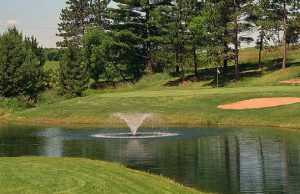 Once we have the lakes positioned, our focus turns to the specifics of their design and construction. Among our major concerns are water tightness, water quality and, perhaps most importantly, safety. Golf course ponds are often referred to as “attractive nuisances” for the simple reason that they may lure people to a potentially dangerous situation. Accordingly, we must do everything possible to prevent an accident.
Once we have the lakes positioned, our focus turns to the specifics of their design and construction. Among our major concerns are water tightness, water quality and, perhaps most importantly, safety. Golf course ponds are often referred to as “attractive nuisances” for the simple reason that they may lure people to a potentially dangerous situation. Accordingly, we must do everything possible to prevent an accident.
The best preventive measure is a modified cross section of the typical 3:1 (horizontal:vertical) slope of a lake bank. In early attempts to address the issue, designers specified a “safety shelf” incorporating a 6-foot-wide horizontal landing positioned 3 feet below the normal water level along the entire perimeter of the lake. During the course of years of experience, we have found that the resultant change in slope below water level, which often cannot be seen, may create a less safe condition than if the bottom slope was gentle and even.
The preferred approach to a safety edge has become a more gradual 4:1 or 5:1 slope from the normal water level continuing down to the bottom of the lake. The rationale of this method is that a gentle, even slope can be negotiated back to the bank by all but the most incapacitated people, and it will not provide the false sense of security that a bench might.
Water quality
Water quality is also a major concern, and Rick McGuire of Waterscapers reports that it is in large part related to the quantity of oxygen and nutrients in the lake. Nutrients such as nitrogen and phosphorus are food for algae and, consequently, their presence in large quantities almost ensures the algae blooms that superintendents frequently battle.
Our strategy for controlling the problem takes a two-pronged approach. First, we try to limit the nutrients that reach the lake by circulating our run-off through the previously discussed water-quality basins. Unfortunately, we know that despite our best efforts, some nitrogen and phosphorus will inevitably reach our ponds. To manage this situation, we can introduce aquatic plants into the lake environment that will compete with the algae for these nutrients. Essentially, we are simply promoting the growth of other beneficial species to limit the propagation of the algae.
As you seek to control nutrients, you should simultaneously try to increase oxygen levels in your lakes. The presence of oxygen creates a healthy environment suitable for fish and lower members of the food chain, including microbial life. Typically, oxygen is most lacking at the bottom of a lake where the water is obviously farthest from the atmosphere. To compensate for this problem, it’s beneficial to inject oxygen or ozone from specially designed tubing laid on the bottom of the lake.
This configuration helps solve the problem at its source. Additionally, as the bubbles drift to the surface, they tend to pull water with them creating an upward circulation in which less aerated water is dragged to the surface, and more oxygen-rich water replaces it at the bottom of the lake. This action tends to produce a column of water that is more uniform and healthy from top to bottom.
A deeper lake also helps the oxygen interact with the lake water because the deeper the lake, the longer it takes for the air to rise in the water column and the greater the period for oxygen transfer. For good aeration, the preferable lake water depth is 15 feet, and 10 feet as a minimum.
Water conservation
As water becomes a more precious commodity, its conservation will become an increasingly important issue as well. To conserve water in golf course lakes, it’s typical to line them with an impervious membrane to prevent leaking. PVC liners have been the material of choice for the lake industry.
This material is relatively inexpensive, easy to install, durable and has a proven track record that covers more than 30 years. A PVC liner must be covered with soil, and from an aesthetic viewpoint, a soil bottom is the most desirable lake bottom surface. There are other materials that have been used in lake systems; some covered and some uncovered. But PVC continues to be the most suitable for this type of work.
As you can see, good lake design covers a range of topics and considerations. Successfully managing these factors will provide the design that creates the most cost-effective, attractive and functional lake — one that you can successfully maintain for many years.
Information from Grounds Maintenance Magazine


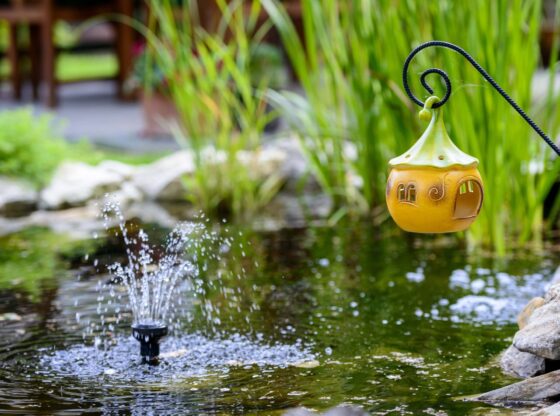



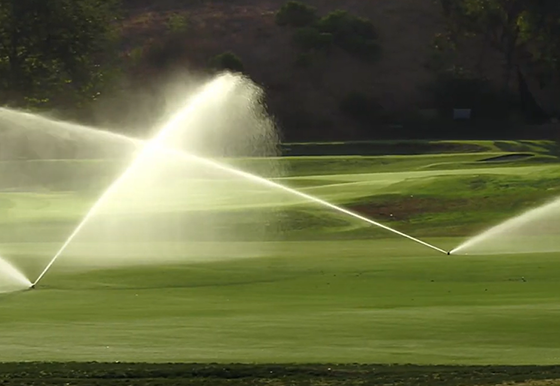
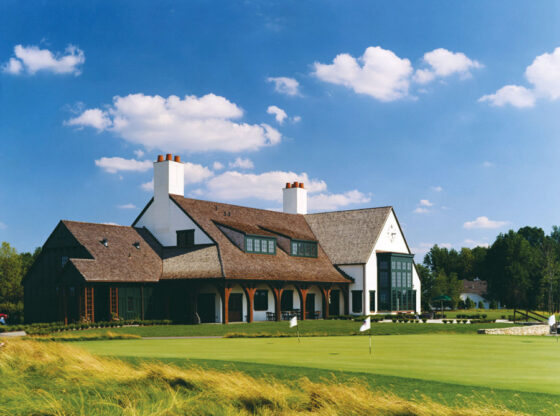

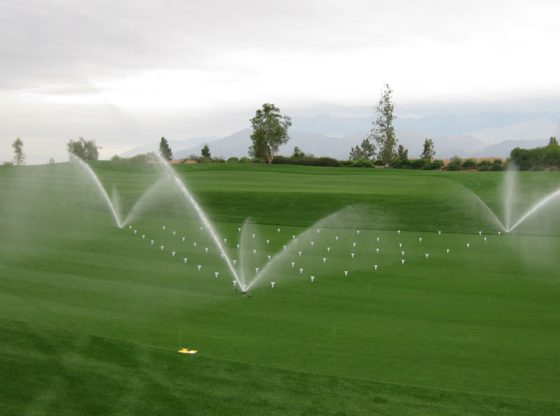



I want to have something yo make my property a bit more interesting. I didn’t realize that ponds were such a good option for that! Not only would it look nice, but it would provide some irrigation and also something fun for my kids to play with!